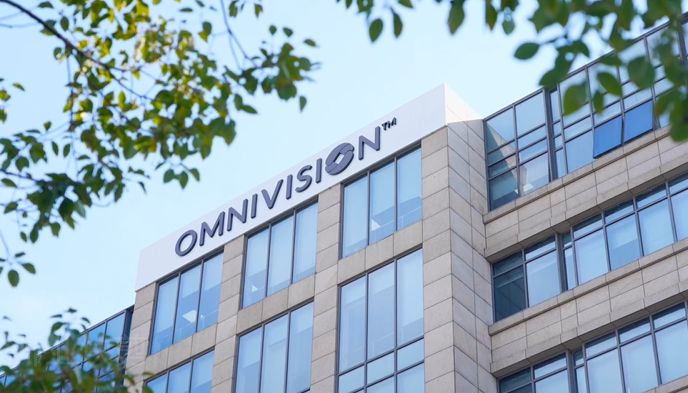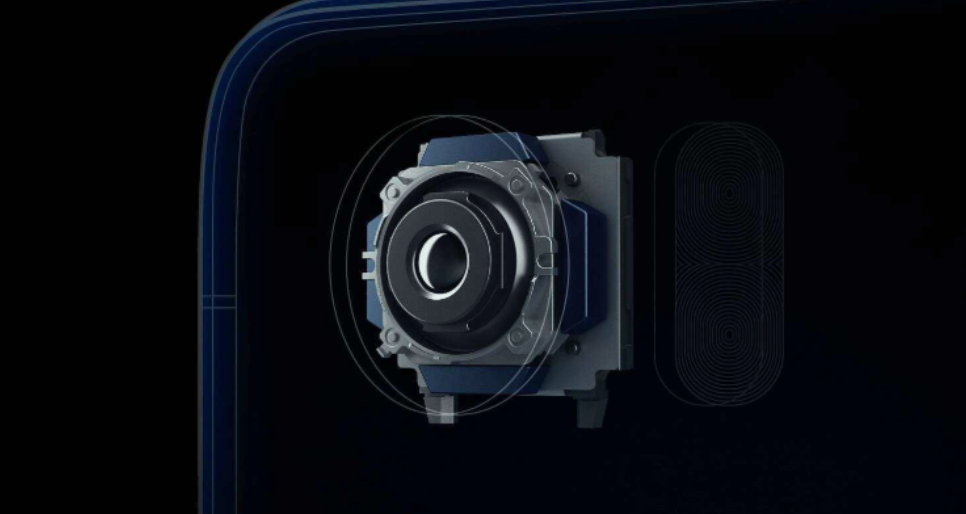Cell phone CMOS changes in the year of the dragon, five enterprises Ming fight high-end
Time: Feb 27, 2024Views:
As the first main battlefield of CMOS image sensors, cell phone field this year ushered in the biggest changes, the market order and the rules of the game will even be rewritten.
At the beginning of January, the cell phone CMOS shipments for many years ranked first in the world Gekko Microelectronics even issued the first single chip 5000 pixel products GC50E0, as well as the main photographic products, based on the 1.0μm pixel of the large bottom of the 50-megapixel products GC50B2. the company not only formally transformed into a Fab-lite model, but also become an important force in the high-end market.
In October last year, a blogger broke the news that it had been confirmed that Huawei was self-researching CMOS image sensors, involving the whole process from wafer to chip, and there are innovations in some of the processes, which can be compatible with the mainstream back-illuminated process (BSI).
A Chinese first-tier CMOS manufacturer executives anonymously, "If the news of Huawei's self-developed CMOS is true, the most affected supplier is Sony." Some organizations estimate that this means that its annual revenue from selling CMOS to Huawei will be reduced by billions of dollars.
Chaodian obtained more precise information from the cell phone industry chain is that the main camera of Huawei's P70 series, which will be released in the first quarter, will use a domestically produced CMOS sensor, which is expected to be a new-generation OV50 series sensor from Howell. The main camera program created by Huawei and Howell together, specifications or nearly an inch large bottom.
At the end of last year, rumors of Howell, Samsung and other high-end cell phone CMOS products have increased prices, ranging from 10% -30%.
Since 2000, Sharp launched the world's first camera-equipped cell phone J-SH04, so far mobile imaging has undergone 23 years of development, respectively, through the single camera, dual camera and multi-camera era.
Cell phone lens sensor from hundreds of thousands of pixels of CCD evolution to the current 200 million pixels CMOS, to help the imaging effect has gained a qualitative leap, the corresponding market size has also grown rapidly.
Chaodian Intelligence estimates that in recent years, the cell phone industry needs to digest about 600,000 CMOS chips per year, accounting for about 71.5% of the overall market shipments.
Comprehensive multiple market organizations predict that global CMOS shipments from 2021 to 2025 will continue to maintain a compound annual growth rate of 8.5%, close to 12 billion in 2025, sales will exceed 240 billion yuan.
According to Chaodian Think Tank, driven by intelligence, automotive, security, flat panel/notebook and other industries are gradually becoming large CMOS demand, and robotics, drones, AR/VR and other fields are in the rapid release of volume.
But what will not change is that because of product characteristics, market maturity, scale demand and other factors, the cell phone industry in the future for quite a long time is still the main CMOS track.
I.e., whoever gets the cell phone gets the world.
From the point of view of the current market pattern, Sony, GALAXYCORE, Samsung, Omnivision, SmartSens Technology the five will become a strong competitor, Hynix and Chiking and other forces are slowly fading out.
Sony.
The exclusive supplier of Apple's iPhone series, now the king of cell phone CMOS. 1996 Sony officially began to announce the development of CMOS sensors, and has been dominating the high-end market for many years.

However, since 2020, Sony's cell phone CMOS dominance has been challenged, market share from the peak of close to 60% began to go down, Samsung, Howell has cut its meat. And let the other mainstream cell phone manufacturers more disgusted, Sony's production capacity and quality of the first to ensure that the largest customer Apple, in terms of delivery and service is not as good as other CMOS suppliers.
GALAXYCORE
GALAXYCORE is the absolute leader in the CMOS market for cell phones with less than 12 megapixels, and has been the world's No. 1 in terms of shipment volume for many years, with outstanding competitiveness.
Taking changes in market environment and customer needs as the basis and aiming at the pain points of industry applications, Ge-tech Micro has obviously increased the breakthrough in the mid- to high-end market in recent years, with its 32-megapixel and 50-megapixel products coming to the market one after another.

According to Teochew Intelligence, although the two 50-megapixel high-end products, GC50E0 and GC50B2, adopt different technology paths, Geco Microelectronics adopts a single-chip architecture. This unique chip structure is the company's own research and development, and the mainstream stacked structure is significantly different from the downstream customers in the ultimate pursuit of "cost reduction and efficiency" strategy has a positive significance.
Samsung
There are about 200 million per year Samsung cell phone bottom, and is the main supplier of a number of first-tier Android cell phone brands in China, Samsung CMOS sales have been in the world's top three levels.

In order to catch up with rival Sony, Samsung CMOS in the large bottom and high pixel technology innovation to do enough articles, but also in the cell phone world is the earliest release of 100 million and 200 million and other billion pixel products.
However, Samsung has always had the habit of exclusivity, so up to now, in addition to the Galaxy S23 Ultra, there is no other manufacturer's models equipped with this 200 million pixels flagship CMOS. compared to other billion pixels under the banner of Samsung's CMOS, in addition to the number of pixels, almost completely backward.
OMNIVISION
In 1995, OMNIVISION was born in Silicon Valley. Founded in just five years on the NASDAQ, in 2007 to get Apple's order, until 2010 market share is still as high as 50% or so.

But in less than two years, due to the rise of Sony, Howell was completely kicked out of the fruit chain. After a few changes of hands, in 2019, it became a subsidiary of Weir shares, wearing the "domestic chip enterprise" coat. However, in the view of many industry insiders, Howell is at most a "hybrid" gene.
According to Chaodian statistics, in addition to Apple, Howell is currently supplying almost all other first-tier cell phone brands, many of which are still the main supply status.
SmartSens
China's CMOS manufacturers SmartSens is the youngest of these five companies, from the security field to extend the smartphone, smart car and other track speed is very rapid.

In terms of technology, SmartSens has accumulated advanced technologies such as SFCPixel®-SL patented technology and AllPix ADAF® technology in smartphone CIS, and the dark light performance and HDR applied to security can be superimposed on smartphones across different fields.
In terms of products, Steamboat has developed and mass-produced a variety of series of products ranging from 2 to 52 megapixels, among which the newly launched SC580XS is the flagship main camera masterpiece based on the platform after Steamboat has successfully mass-produced the first 50 megapixel product with 22nm HKMG Stack process. Currently, SmartSens has four ultra-high resolution CIS products with different performance, which can empower smartphone main camera, front camera, ultra-wide angle and telephoto camera applications.
recommend
Jan 10, 2024
At last years CES 2023, Sony Honda Mobility, a joint venture between Sony and Honda, was officially unveiled, with the t...
Hot







